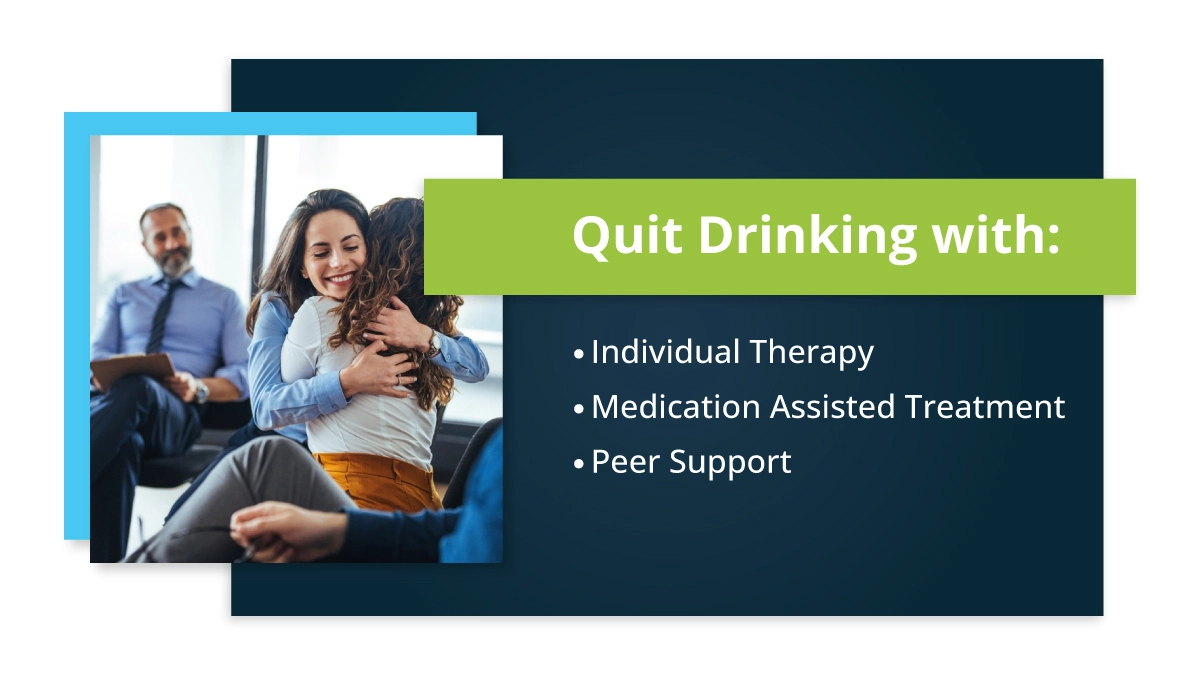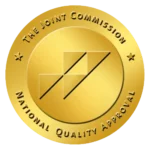How to Quit Drinking: A Comprehensive Guide to Quitting Alcohol for Good
Breaking free from alcoholism requires courage, determination, and a commitment to self-improvement. While alcohol is prevalent in our society and normal in many social settings, many individuals find themselves in a dangerous cycle that impacts their health, emotional well-being, and quality of life. Making the decision to step away from the bottle is a huge step towards a healthier lifestyle
In this article, we’ll be diving into the challenges of overcoming alcoholism and effective ways to achieve long-term sobriety. Our goal is to offer insightful strategies, practical tips, and overall guidance to help individuals navigate the world of addiction recovery.
From understanding how to identify a drinking problem to discovering the different types of treatment, this guide will help you overcome a drinking problem.

Understanding Alcoholism and Alcohol Dependency
Alcohol use disorder, commonly referred to as alcoholism, is a chronic medical condition that is characterized by an individual having an impaired ability to stop or limit their alcohol consumption despite the consequences it brings. This is a complex disorder that can be present in various forms and can have a profound impact on the person’s physical and mental well-being.
An alcohol use disorder can be linked to a variety of factors like a genetic predisposition, mental health conditions like depression, social influences, traumatic experiences, drinking from an early age, etc.
Alcohol dependency can lead to a range of serious health issues over time, such as liver disease, cardiovascular problems, neurological damage, and mental health disorders. AUD can also lead to strained relationships, difficulties at work or school, and legal complications, eventually diminishing the overall quality of life for these individuals.
How to Identify a Drinking Problem
When it comes to addressing the complexity of alcohol use disorder, recognizing tell-tale signs of alcohol misuse is important for a successful recovery. Understanding the nuances between heavy drinking, binge drinking, and a full-blown alcohol use disorder can help you gain insights into your own drinking habits.
Heavy drinking involves consuming alcohol that exceeds the recommended limits. The recommended consumption limit is 14 drinks or more per week for men and 7 drinks or more for women. While this pattern of drinking doesn’t automatically indicate AUD, it can still pose severe health risks and increase the risk of developing the disorder.
Binge drinking focuses more on the amount of alcohol consumed within a few hours rather than the course of a week, like heavy drinking. This usually involves consuming 5 or more drinks for men and 4 or more drinks for women within roughly 2 hours. Again, while this is not necessarily a sign of AUD, it can cause significant risks like alcohol poisoning and accidents involving injury.
Alcohol use disorder, however, can encompass many problematic drinking habits. AUD can significantly impact various aspects of an individual’s life, including relationships, work, and overall well-being.
Signs and Symptoms of Alcohol Use Disorder
There are many signs and symptoms of AUD to look out for if you believe that you or a loved one has a drinking problem. From behavioral changes to significant switches in mood, it is important to pay close attention to these signs and consult a medical professional for an official diagnosis.
Below are signs of alcohol use disorder.
- Increased tolerance (the individual requires more alcohol each time to reach desired effects)
- Loss of control over drinking habits
- Experiencing withdrawal symptoms
- Neglecting responsibilities at home, work, or school
- Continuing to drink despite the consequences
- Drastic changes in behavior
- Drinking as a way to cope
During this time, encouraging open communication, offering support, and seeking professional guidance can be essential steps in addressing the issue and helping the individual receive the necessary treatment and support. Contact us to learn more about how we can support you in your journey.
How to Quit Drinking
The first step to quitting drinking is to acknowledge the issue and recognize that you have a problem. You can then begin to set clear goals that are realistic and achievable. Reaching out and seeking support from family and friends is also beneficial, as they can provide encouragement and understanding and hold you accountable for your decisions.
When dealing with alcohol use disorder, seeking professional help is the best course of action. Recovering from AUD in a professional setting will allow you access to around-the-clock support and medications that can help alleviate uncomfortable symptoms and cravings that make quitting such a challenge.
Individual Therapy
Professionals at a facility like The Haven Detox will conduct an initial assessment to understand the severity of their condition, evaluate any co-occurring mental health issues, and identify underlying factors of their AUD. From here, the professionals can create a customized treatment plan that aligns with your specific needs and goals for recovery.
Once a treatment program has been created, you can begin individual therapy sessions with an experienced therapist. Cognitive behavioral therapy is a common type of talk therapy that helps individuals identify and just unhealthy thought patterns contributing to AUD. This often involves exploring triggers and learning healthier coping mechanisms.
The overall goal of individual therapy for alcohol use disorder is to equip individuals with the necessary tools, skills, and insights to effectively manage their drinking behaviors, improve their emotional well-being, achieve long-term sobriety, and improve their overall quality of life.
Medication Assisted Treatment
Alongside therapy, professionals at a treatment facility can administer medication that helps to alleviate withdrawal symptoms and reduce cravings.
Below are common medications used in the treatment of AUD.
- Disulfiram: Creates an unpleasant physical reaction when the individual consumes alcohol, like nausea and palpitations
- Acamprosate: Helps individuals maintain abstinence by reducing the physical and emotional distress associated with alcohol withdrawal and cravings.
- Naltrexone: Works by blocking the euphoric effects of alcohol and reducing the desire to drink.
Peer Support
One of the best ways to maintain sobriety is to find support from individuals who have similar experiences by joining peer support groups. These groups can offer a sense of belonging and allow these individuals to connect with people who understand their struggles. Since everyone in peer support has similar goals, they can work together to hold each other accountable in recovery as well.
Why is Professional Treatment Often Needed for Quitting Alcohol?
Professional support allows you to work with a professional in order to create an individualized plan that best meets your needs and goals for recovery. This guidance and support can make detox and recovery much more manageable.
What makes quitting alcohol especially dangerous, especially for those with more severe conditions, is the intense withdrawal symptoms. Within 6-12 hours after the consumption of alcohol, individuals with AUD will begin withdrawing from the substance. In a treatment facility, you will have around-the-clock medical supervision to ensure your safety and comfort during the process. Medication can also be used in treatment to help alleviate withdrawal symptoms and reduce cravings.
Alcohol Withdrawal
Alcohol withdrawal occurs when an individual who has been regularly consuming alcohol suddenly stops or significantly reduces their intake. This abrupt stop in consumption can result in a variety of uncomfortable, sometimes painful withdrawal symptoms.
The common symptoms of withdrawal are listed below.
- Tremors
- Anxiety
- Nausea and vomiting
- Excessive sweating
- Insomnia
- Increased heart rate
- Hallucinations
- Seizures
Proper management of alcohol withdrawal can help reduce the risk of severe complications and improve the overall safety and well-being of individuals wanting to quit drinking. While withdrawal can make quitting alcohol difficult, the right guidance and support can help make the process easier. Contact us to speak with a counselor and learn more about our treatment services.
Maintaining Sobriety After Treatment
Overcoming an addiction to alcohol doesn’t end at treatment. Maintaining sobriety after receiving treatment for AUD is a crucial step in the journey toward long-term recovery and improved well-being. After undergoing treatment, individuals must implement the strategies, coping mechanisms, and lifestyle changes they learned in therapy to support their ongoing recovery.
Below are a few key practices for maintaining sobriety after treatment.
- Establish a strong support system of friends, family members, and peers who are respectful of your commitment to sobriety.
- Participate in aftercare programs offered by the treatment facility.
- Prioritize self-care
- Avoid the triggers you identified in therapy.
- Practice mindfulness often
- Set realistic goals
Implementing these strategies can help individuals to strengthen their commitment and enhance their overall well-being.
Frequently Asked Questions (FAQ)
How can one deal with alcohol withdrawal symptoms?
The safest way to handle withdrawal symptoms is to undergo detox at a professional treatment facility with access to around-the-clock medical care and medication. This often includes medications to alleviate symptoms such as tremors, anxiety, and seizures while ensuring adequate hydration and nutrition. Attempting to go through detox and withdrawal at home can be dangerous and is not recommended by professionals.
How can I stop drinking?
Putting an end to alcohol abuse begins by addressing the issue and recognizing that you have a drinking problem. From there, it is important to set clear and realistic goals as well as seek professional help. The rehab facility will work with you to develop a plan for treatment based on your individual needs, ensuring a safe and effective recovery. Receiving treatment at a facility allows you to stay away from temptations and receive the support you need.
How can I quit drinking when everyone around me drinks?
When you quit drinking, you must communicate openly to everyone in your life about your decision and ask for their support and understanding. It is also crucial to set clear boundaries and let them know what makes you uncomfortable. While not all your friends need to be sober, it is beneficial to have supportive people in your life who engage in activities without alcohol. Joining support groups is a great way to connect with people going through a similar struggle. You should also be developing healthy coping strategies like mindfulness and deep breathing techniques.
Quit Drinking with Support From The Haven Detox-Little Rock
While making the decision to quit drinking is a huge step in the recovery process, the right support, guidance, and resources provided by professionals can make all the difference. The Haven Detox aims to offer a safe and supportive environment where individuals can recover as comfortably as possible.
We provide evidence-based treatment, such as cognitive behavioral therapy and medication-assisted treatment, to help patients overcome their alcohol use disorder effectively. The professionals at our facility are dedicated to providing personalized treatment programs that align with the needs and goals of each individual. Our residential treatment program offers patients comfortable dorms to live in, around-the-clock medical supervision, and access to our many amenities. If you or a loved one is battling a drinking problem and want to quit, contact The Haven Detox-Little Rock at (501) 271-3342 to speak with one of our friendly counselors, who are available around the clock to answer your questions about treatment.




